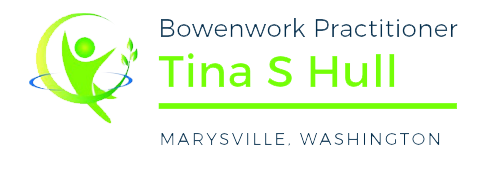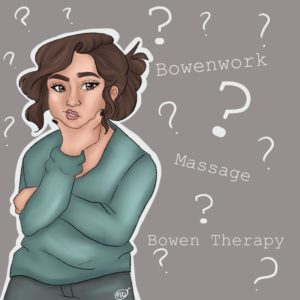What is the Difference Between Bowen Therapy and Massage?
I get asked this question by nearly every new client I see. After seven years of explaining it to clients, you’d think it would be easy to paint a word picture for the average person to understand. Some people like the science behind Bowenwork while others are bored to tears with the details… so I will attempt to keep it as simple yet informative as possible.
Let’s Compare Bowenwork Therapy v.s. Massage Therapy
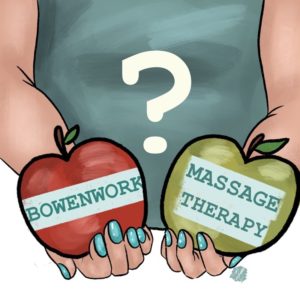
One of the first comparisons people often make when trying to place Bowen Therapy into a category, is they compare it to massage. Bowenwork and Massage both deal with human bodies. Orchard growers grow apples, but they do not deal with the fruit the same way Gerber baby food company does.
The Basics of Massage Therapy

As an LMT, I have given and received many massages. They feel great. They are very relaxing. Soft music is usually played during the session. The oil used often smells very good and when mixed properly adds to the therapeutic benefits of the massage.
There are hundreds of different types of bodywork modalities out there. The most commonly known here in the states is probably Swedish Massage or Swedish Deep Tissue Massage. The client is unclothed and draped with sheets and blankets on a massage table. A skilled Swedish Massage Therapist will keep their hands in constant contact once the massage has started.
Oil is used to help the hands and/or forearms glide over the skin. Strokes are done toward the heart. Pressure starts out more “surface” and works toward “deep” layers as you warm up the tissues. Sometimes intense pressure or “compression” is used to force/encourage a muscle to “release”. Brain/body will put “guard” up. (fight, flight, freeze, sympathetic nervous system active.)
My experience with massage both personally and professionally was this: Massage feels great and it does good for the body. But my clients had to keep coming back again and again and again in order to get about three days of relief. From a money standpoint, it was fine. I had my regulars, the same 15-20 people a week, every week. They would “improve” but rarely were things “resolved”.
I’ve met many people that are uncomfortable being undressed. Some people do not like the touch of massage and even more, people hate needles (acupuncture) or are not comfortable with having their bones cracked (chiropractor). There is another category of people that would love a massage, but even light massage hurts them too much or caused a fibromyalgia flare up. The very delicate skin of the elderly presents another issue for massage.
So What’s The Answer?

When you want to create CHANGE, gentle, permanent change, that is where Bowenwork shines! And it can be done with great benefits from the infants to the elderly, clothed or unclothed, no manual bone-cracking … and NO acupuncture needles… win-win-win!
Bowenwork or Bowen Therapy (or as the Aussie’s say, “BowTech”)
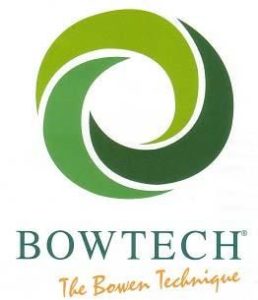
Bowen Therapy has been around for decades yet still so many have never heard of it. Historically people take their pain to the massage therapist, the chiropractor, and the acupuncturist BEFORE they ever hear or get referred to a Bowenwork therapist. The studies done all over the world show that Bowen has an 85% success rate over these three therapies for resolving issues.
The client can be unclothed on a treatment table and draped with sheets and blankets. They can also wear loose light clothing for the entire session. Bowen can be done with the client sitting or standing as the need may be. The moves are gentle. The moves are done mostly with the thumbs, but there are some three finger holds. The gentle, rolling, cross-fiber moves are done on specific points on the body. These points may cross multiple meridians, but also intersect with nerves, vascular bundles or an anchor/insertion point of a muscle.
There are required rest periods in between the moves which is where the real work takes place. The brain processes and uses the information during these rest periods. Each subsequent move builds on the last. The vibrational patterns are so unintrusive that the brain is not quite sure what has happened so it will reset an entire muscle group from the inside.
Similar to when your cursor on your computer gets stuck, and it doesn’t matter what you do, it won’t move unless you shut down the computer and restart it, then suddenly the cursor starts moving. The body can accumulate “holding patterns” that the brain thinks is “normal.” By nudging the nervous system to shut down the Sympathetic (fight, flight or freeze) and put the body into Parasympathetic or REST, RESTORE, REPAIR AND DIGEST…..then change begins. The body will “reboot” or “reset” itself and clear these “stuck” holding patterns.
How Many Bowen Therapy Treatments Are Needed?
Treatment plans are different for every individual. Typically new issues are resolved in 1-3 sessions whereas issues a body and brain have been dealing with for decades will take longer. You will likely know in those first 3 sessions how it is working for you. More often than not though, issues resolve and the client comes back for an occasional “tune-up” or to address a new injury or…
…we never see them again and thus the need to find new clients…
…the old ones don’t need us anymore. And THAT is really the ultimate goal.
Is Bowen Therapy covered by Insurance?
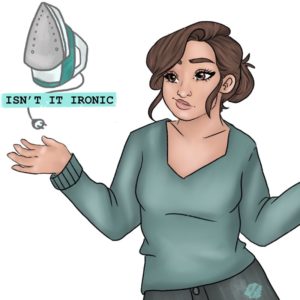
Labor and Industries, PIP and private insurance pay for Bowenwork under the same codes used for…
… you guessed it, MASSAGE! Many different body therapies get lumped under the same medical code used for massage therapy.
But here is how it works:
Here in the USA, at least in the State of Washington, Bowenwork is a Restorative Manual Therapy used by Massage Therapists, Physical Therapists, Occupational Therapists, Naturopathic Doctors, Nurses and even a few MD’s.
Your Medical Insurance pays for Bowenwork if you have the benefits of 1) the Bowenwork Provider in your plan and 2) that Provider is a Primary Provider with your medical insurance company or 3) if you have “out of network” massage benefits.
L&I claims reimburse for Bowenwork when your Provider is a Registered Provider with the State. Motor Vehicle Accident insurance pays for Bowenwork from all of the above Providers with a Prescription from a healthcare professional that is licensed to diagnose.
How Do the Scales Tip?
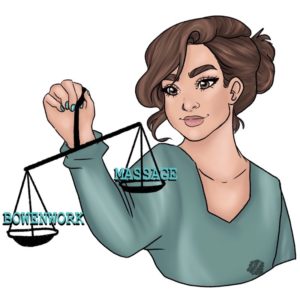
The difference between Bowenwork Therapy and Massage Therapy, in very simplistic terms, is this: Massage has been around for centuries, feels good and has therapeutic benefits. Bowenwork has been around for decades, has therapeutic benefits and has the ability to encourage the body to reset itself by clearing holding and compensation patterns in the body. I highly recommend Bowenwork Therapy because of it’s proven track record for conditions like Headaches, Chronic Pain, Anxiety, Frozen Shoulder, Sciatica and Carpal Tunnel to name just a few. For more information see the information tabs at IwantBowenwork.com or feel free to fill out the contact form to submit any questions.
In our next Blog: What is Baby Bowen?
Written by: Tina S. Hull, LMT PBP
Artwork by: Natalya Durheim

